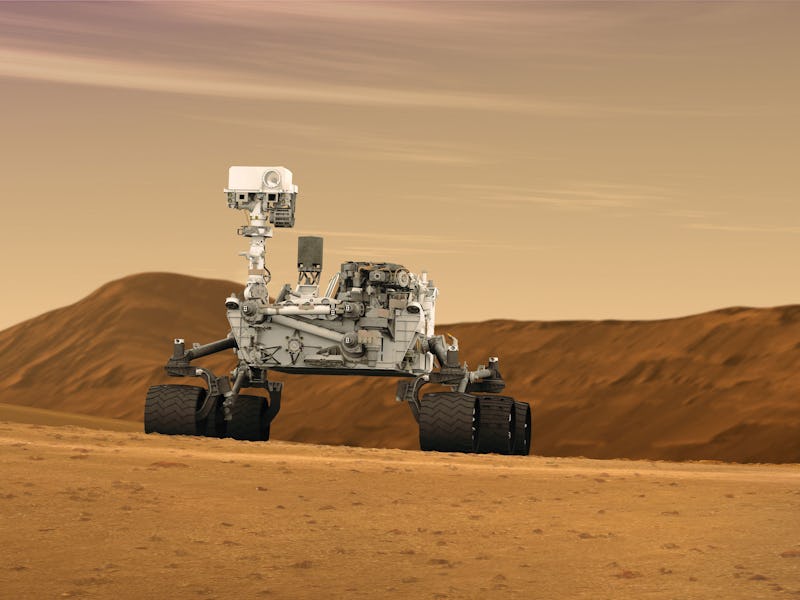Curiosity Rover's Drill Hiccup Might Hinder Martian Life Discovery

The Curiosity rover will leave a remarkable legacy: the data it has collected on Mars since 2011 has shaped the way we think of and visualize the red planet, and scientists still have many more questions, including those about aliens. But time is running out for Curiosity. While NASA puts the finishing touches on its Mars 2020 rover — which will be optimized to investigate astrobiological signatures — the agency looks to maximize Curiosity’s investigative power before 2020 and learn more about the past and present potential for life on Mars.
Unfortunately, Curiosity’s drill is running into some major issues. The drill has been out of commission since December. And it means whatever groundbreaking discoveries about organic molecules and habitability on the red planet are awaiting our discovery may have to wait until the successor rover finally lands on Mars.
“Wet Chemistry”
The key to learning more about life on Mars is through what’s known as wet chemistry, or observing and analyzing materials that are in their liquid phase. Curiosity possesses a series of nine steel cups that each contain a solvent that can allow for wet chemistry processes.
With the incredible abundance of organics found across the planet, wet chemistry could open up an entire realm of astrobiology on Mars that we’ve barely glimpsed.
We could figure out if Mars once possessed life, or at least contained enough ingredients to allow life to evolve. We should determine to what extent the planet is currently habitable, and whether a few modifications on our part or nature’s part could pivot the planet’s trajectory toward habitability.
“The signatures are there,” Paul Mahaffy at NASA Goddard Space Flight Center in Greenbelt, Maryland, told Science recently. “And a way to get more definitive information is with the wet chemistry.”
Mahaffy leads the NASA team in charge of Curiosity’s Sample Analysis at Mars (SAM) instrument. It’s the tool that’s led to the discovery of a slew of organic molecules, including hints of degraded fatty acids a structure associated with life here on Earth. All the Curiosity team really needs to do to follow up on these investigations is use the wet cups that are part of SAM.
Curiosity's drill searches for wet stuff.
But to do wet chemistry, you need a drill that can extract soil samples from the ground. The rover’s drill still responds intermittently, but there’s no way to ensure it can be used safely and continuously. NASA paused Curiosity’s trek for two weeks in December to focus on repairing the drill. Afterward, the team decided to keep Curiosity moving ahead, which meant leaving behind a potentially promising target for wet chemistry.
Why not just wait till the Mars 2020 rover gets to Mars and conducts a more robust investigation of these organics? That’s an option, sure — but there are risks. After all, there’s always a chance the rover fails to safely land on the ground, or runs into its own set up of technical setbacks that prevent it from fully running scientific experiments. In addition, any major findings that Curiosity makes would set the groundwork for Mars 2020 and help pinpoint what sites on the red planet are most worth investigating in the context of habitability and alien life.
NASA is going to need a bit of luck to ensure everything is in place for these tests to happen. If so, we may soon enough learn something really special about the possibility of life on Mars — even before Curiosity’s successor touches the surface of the red planet.